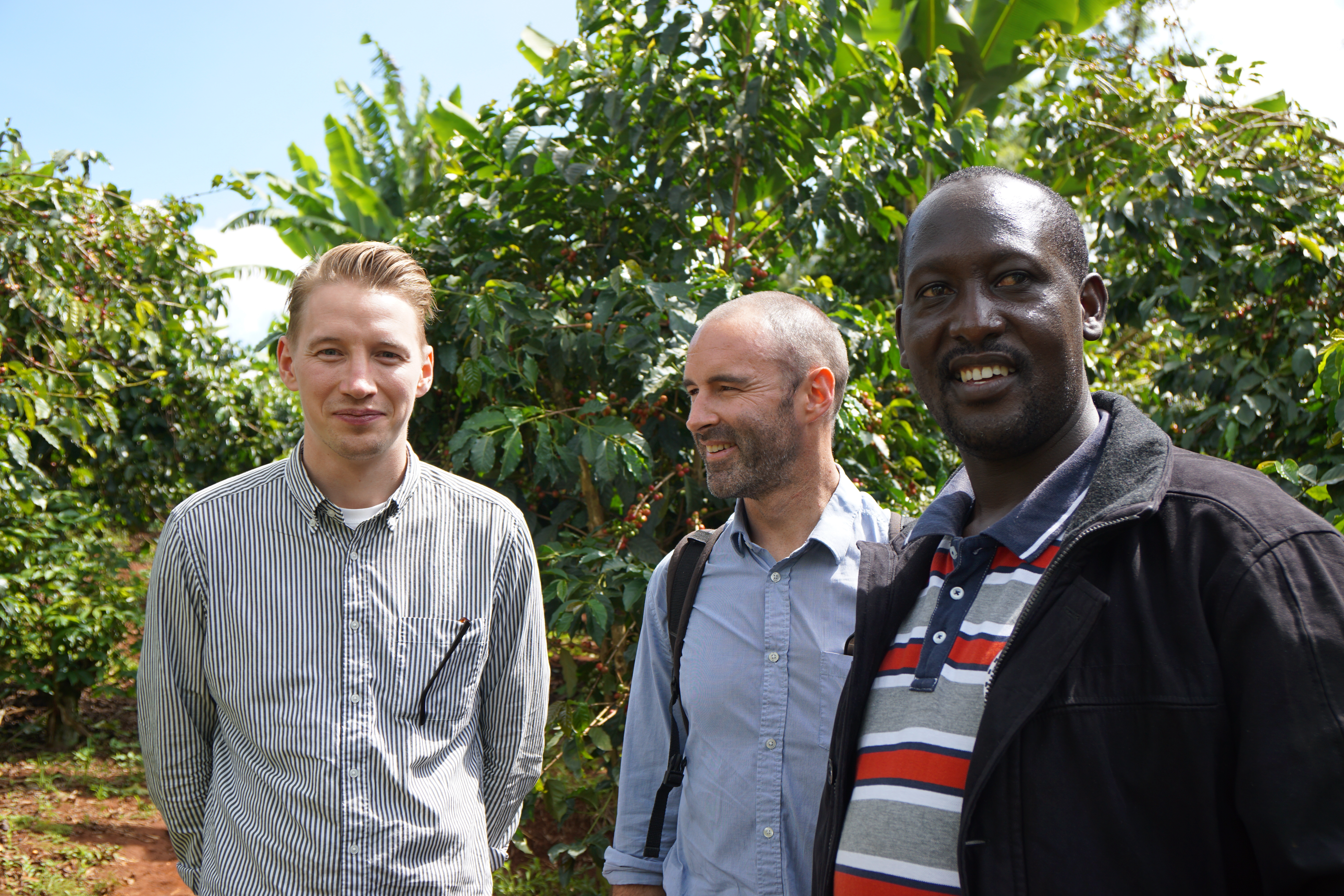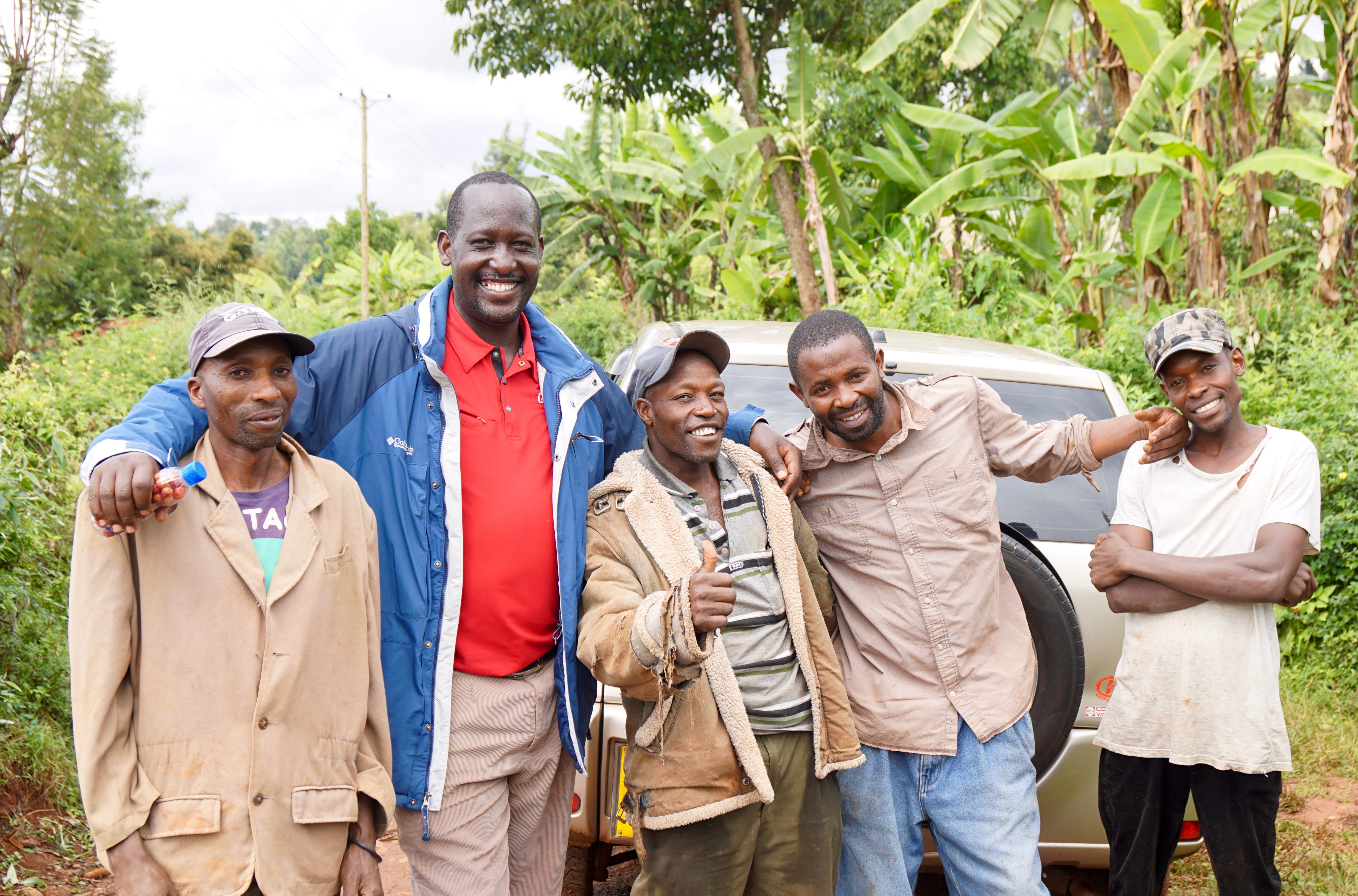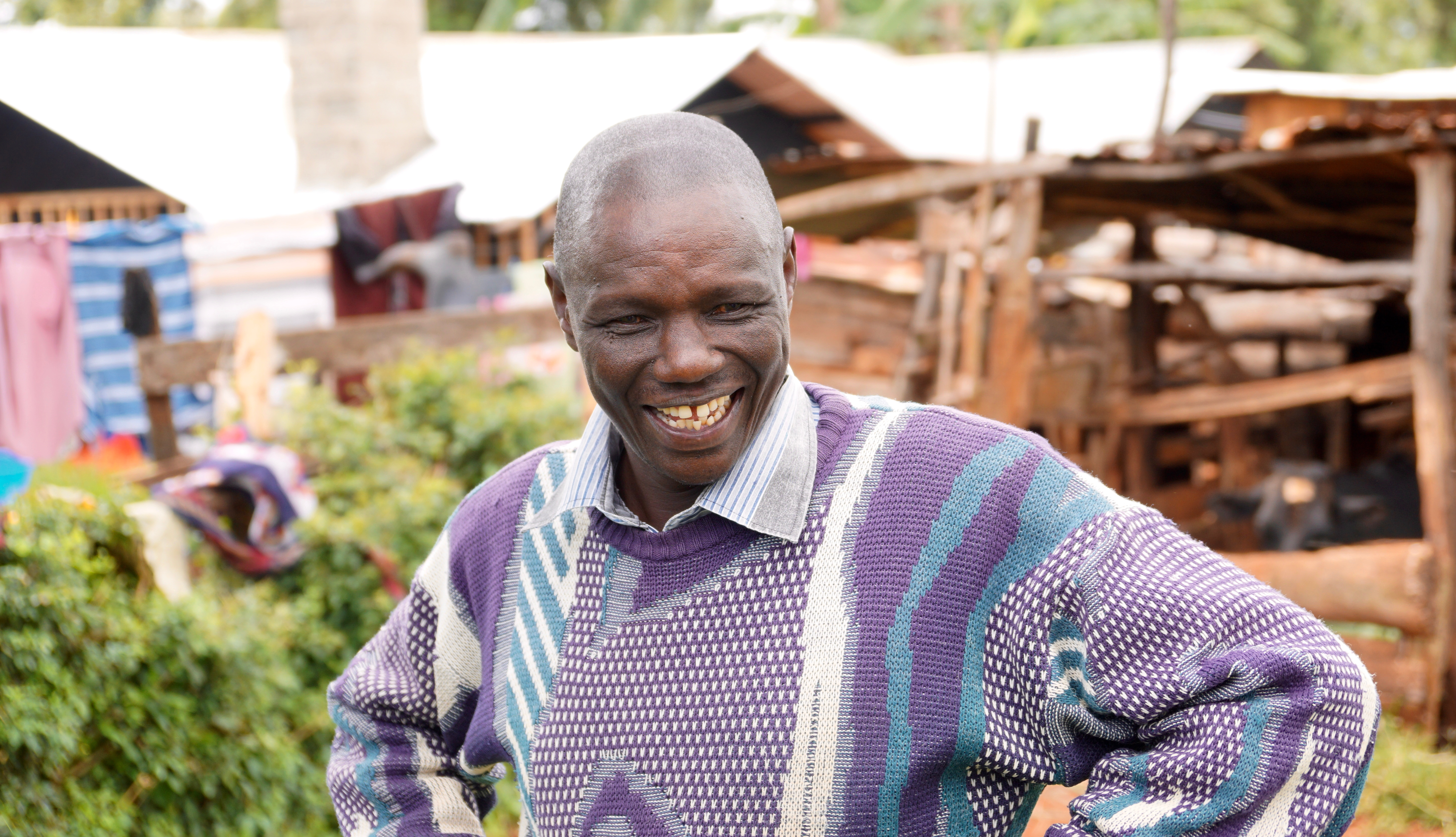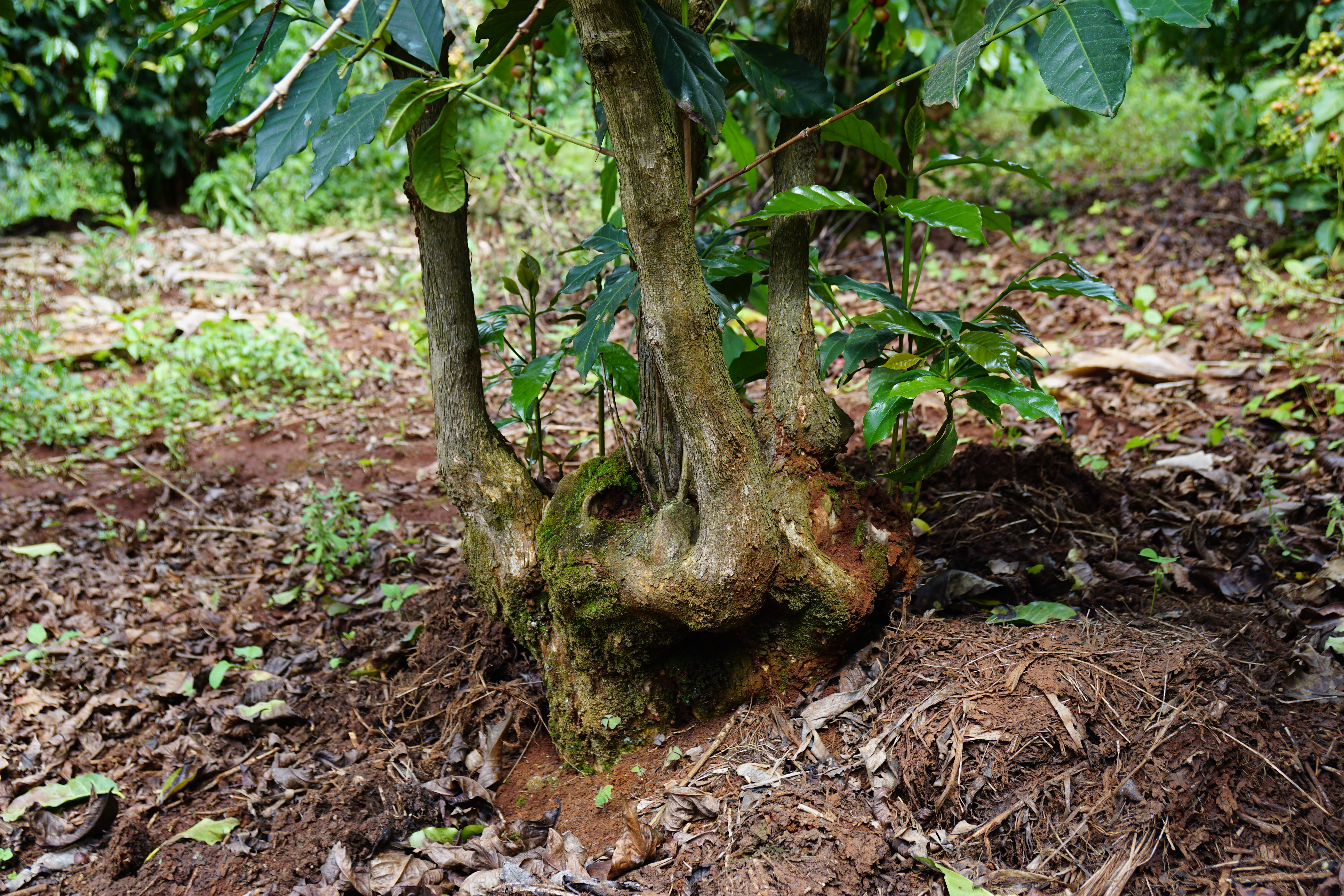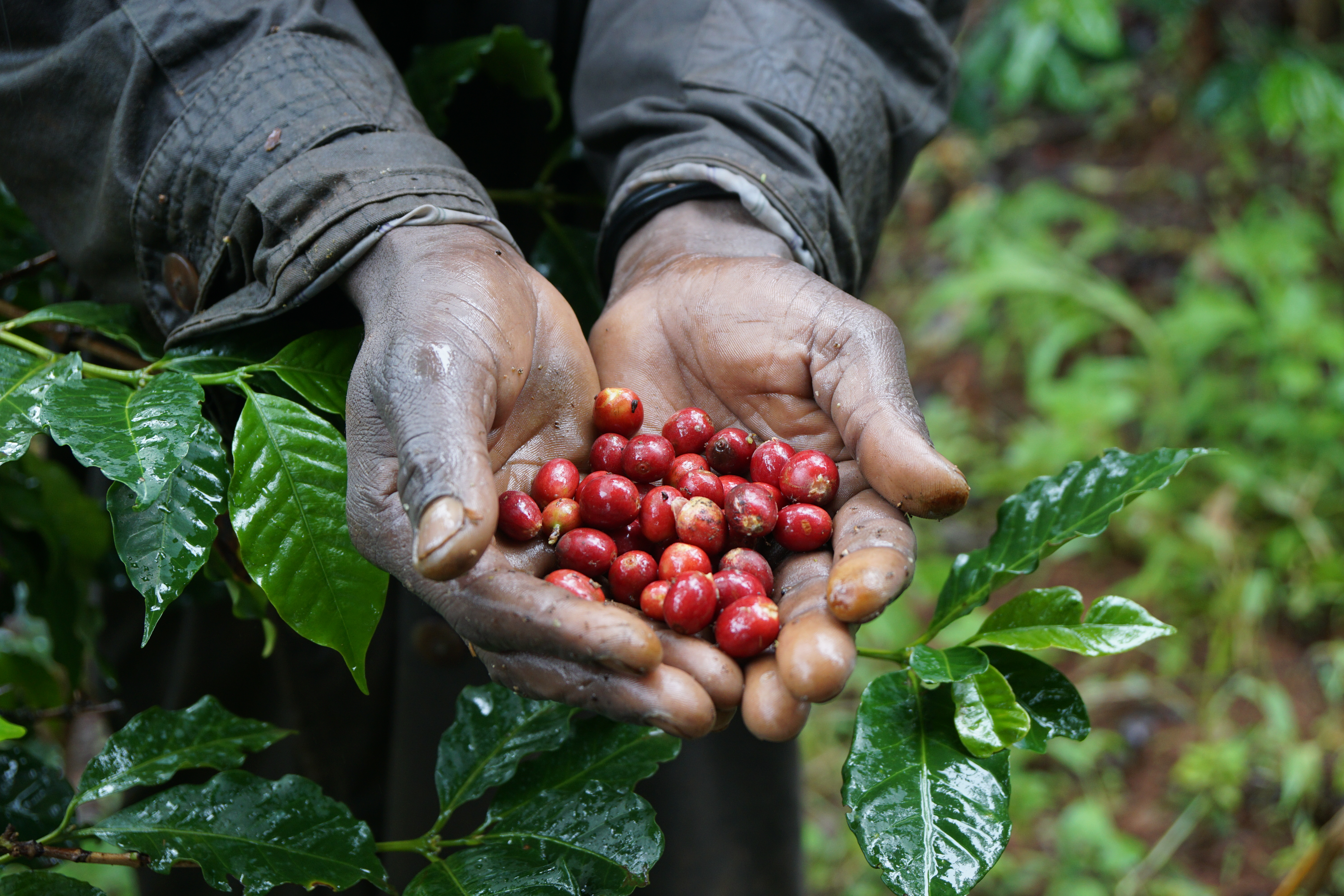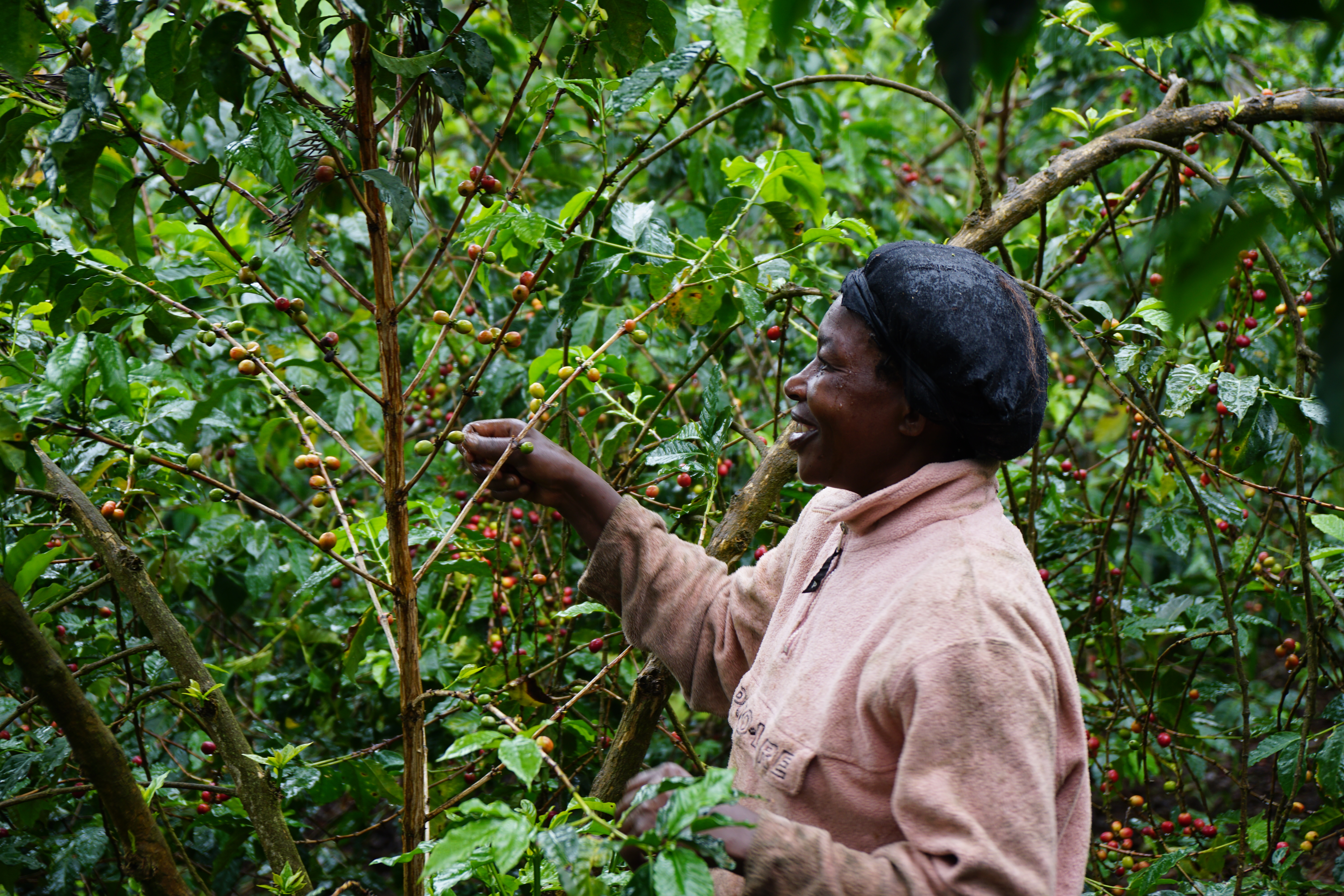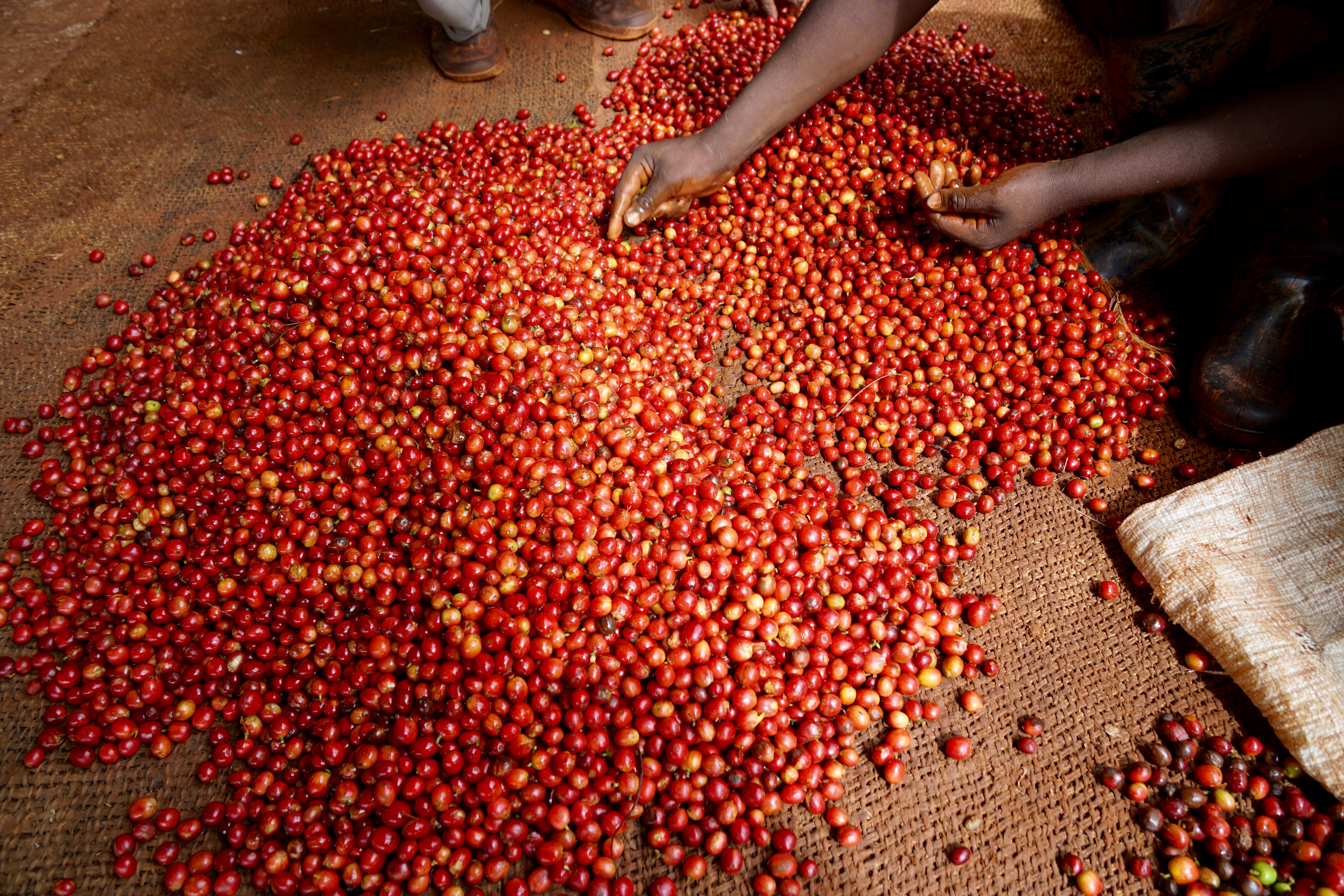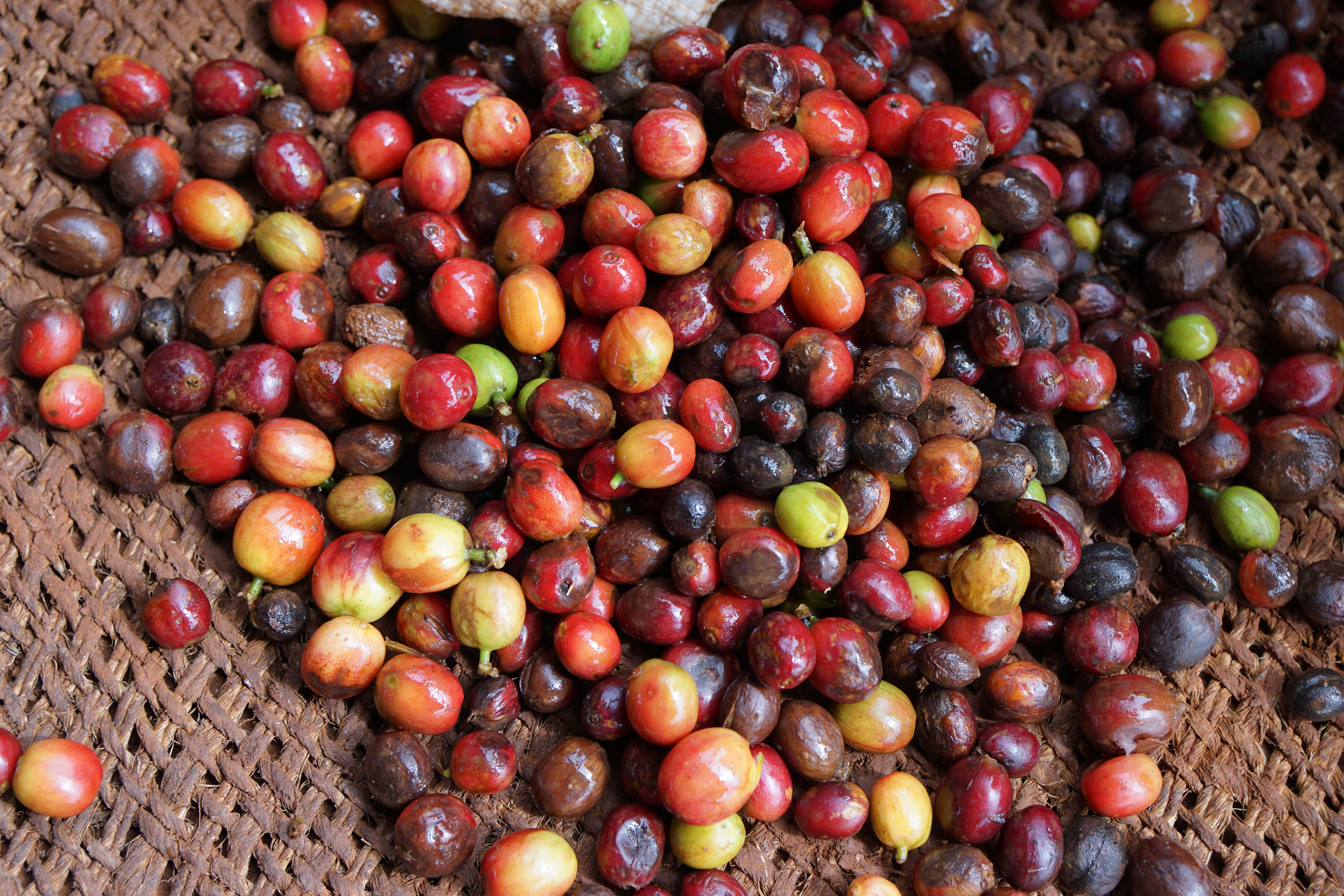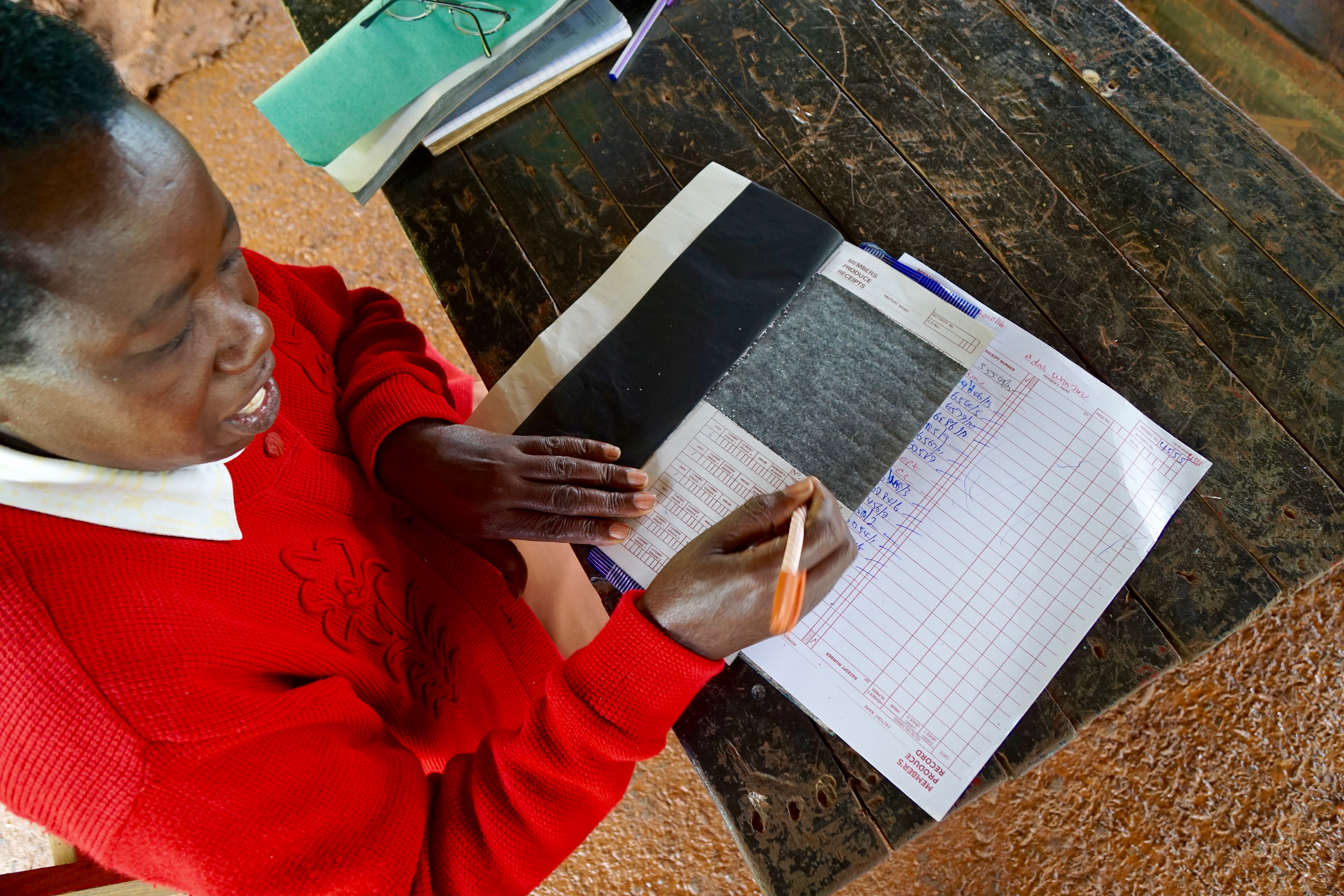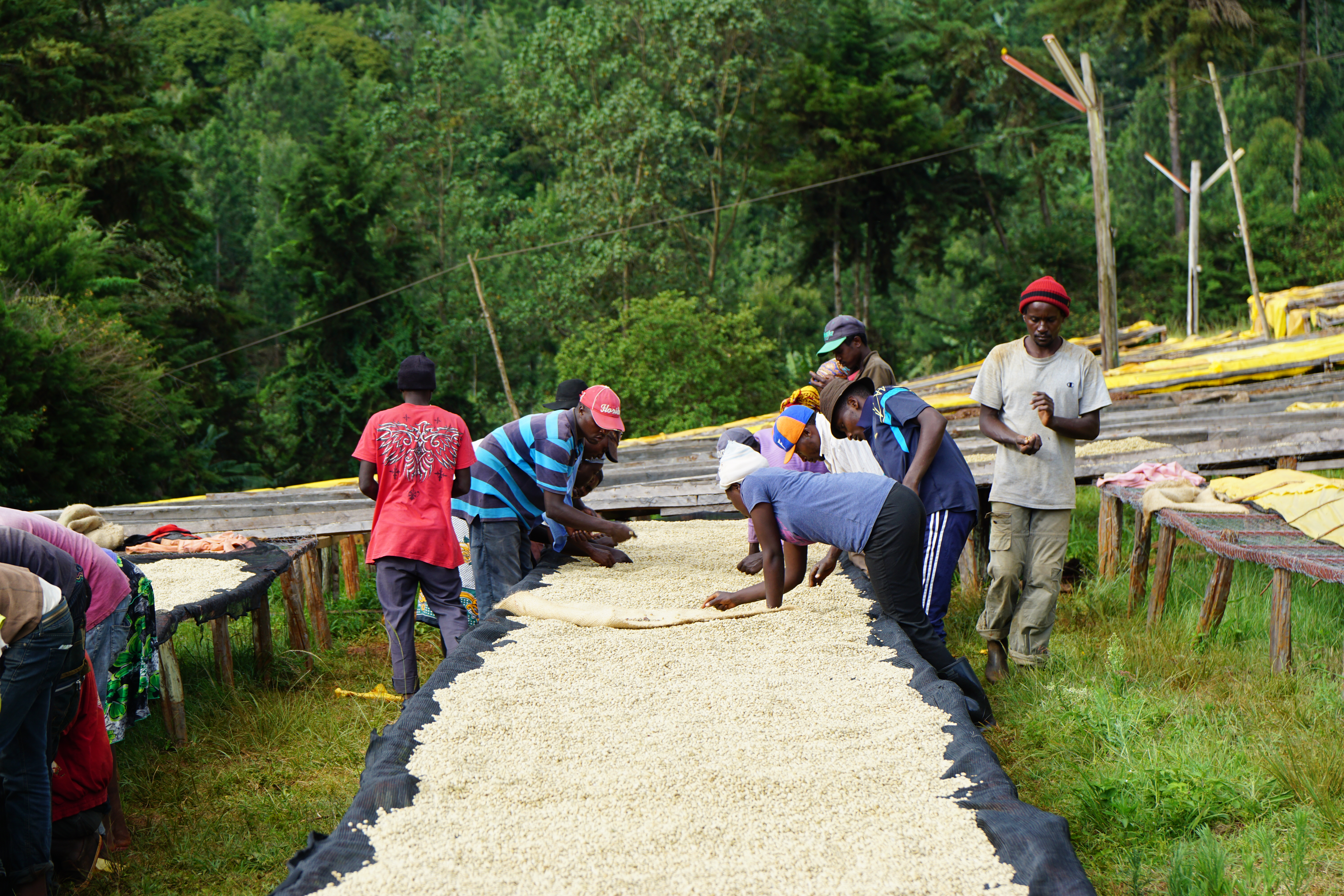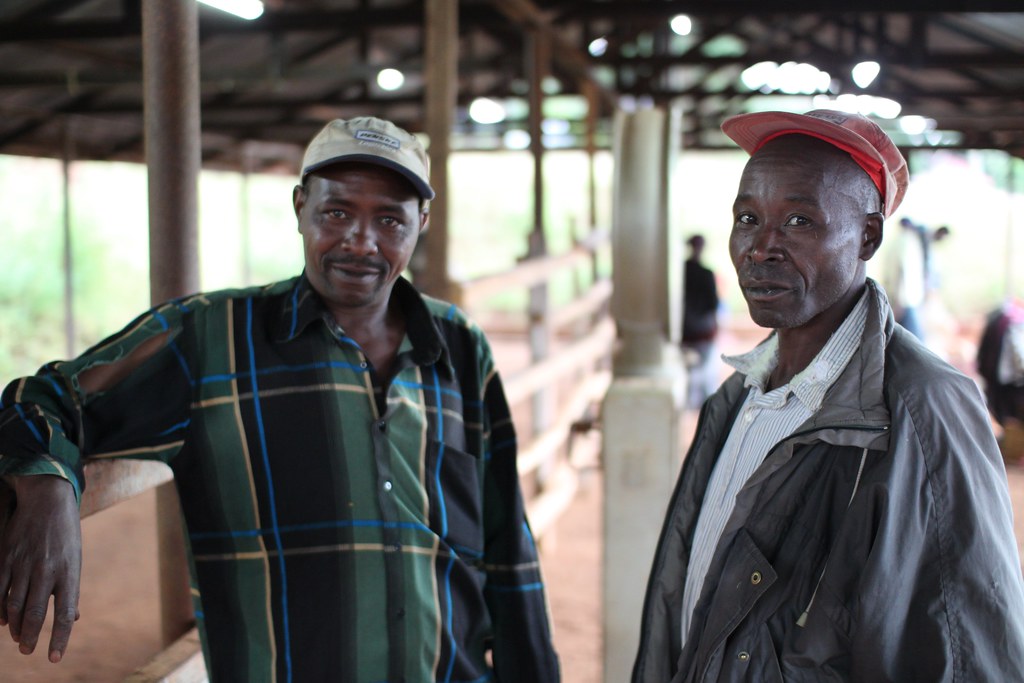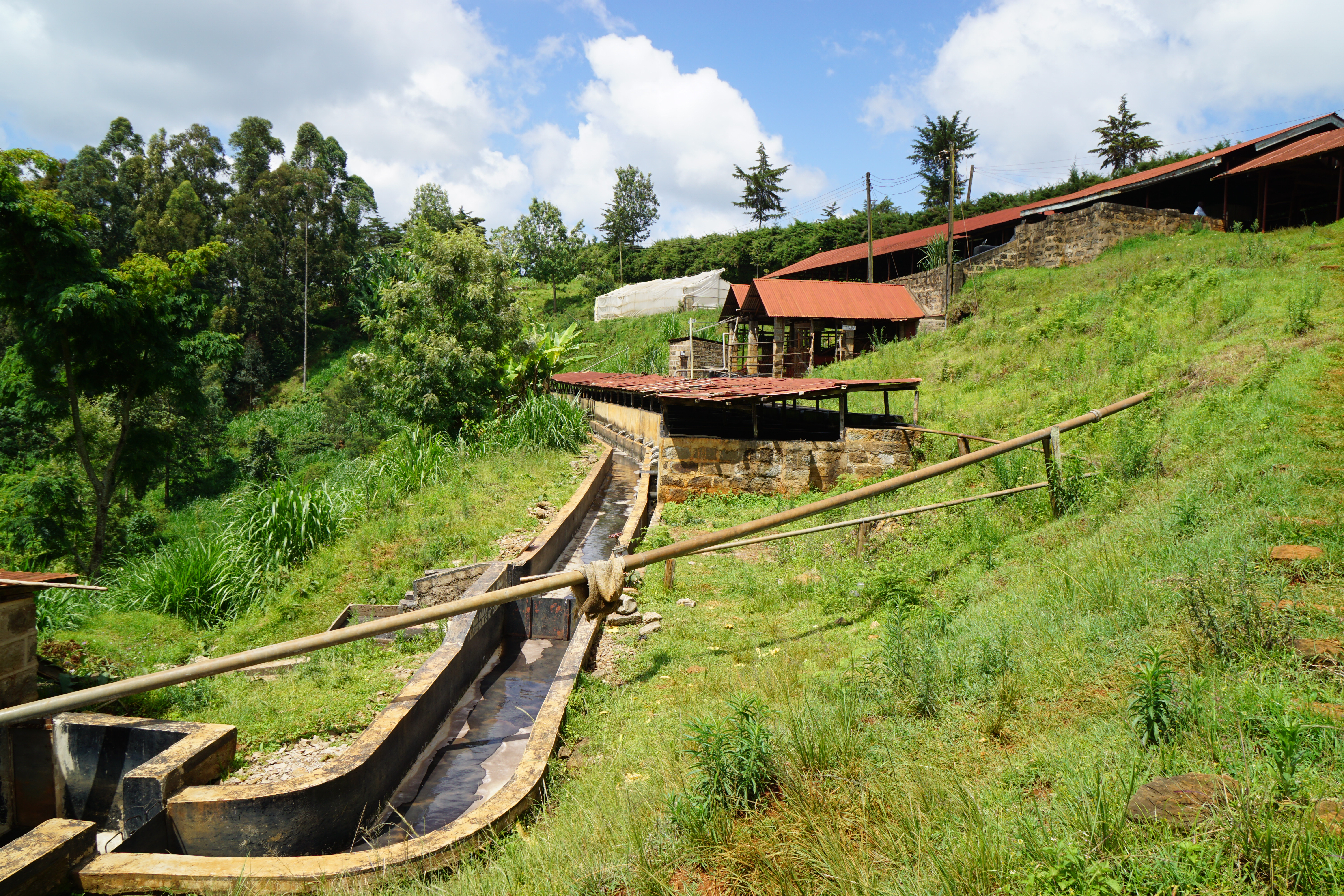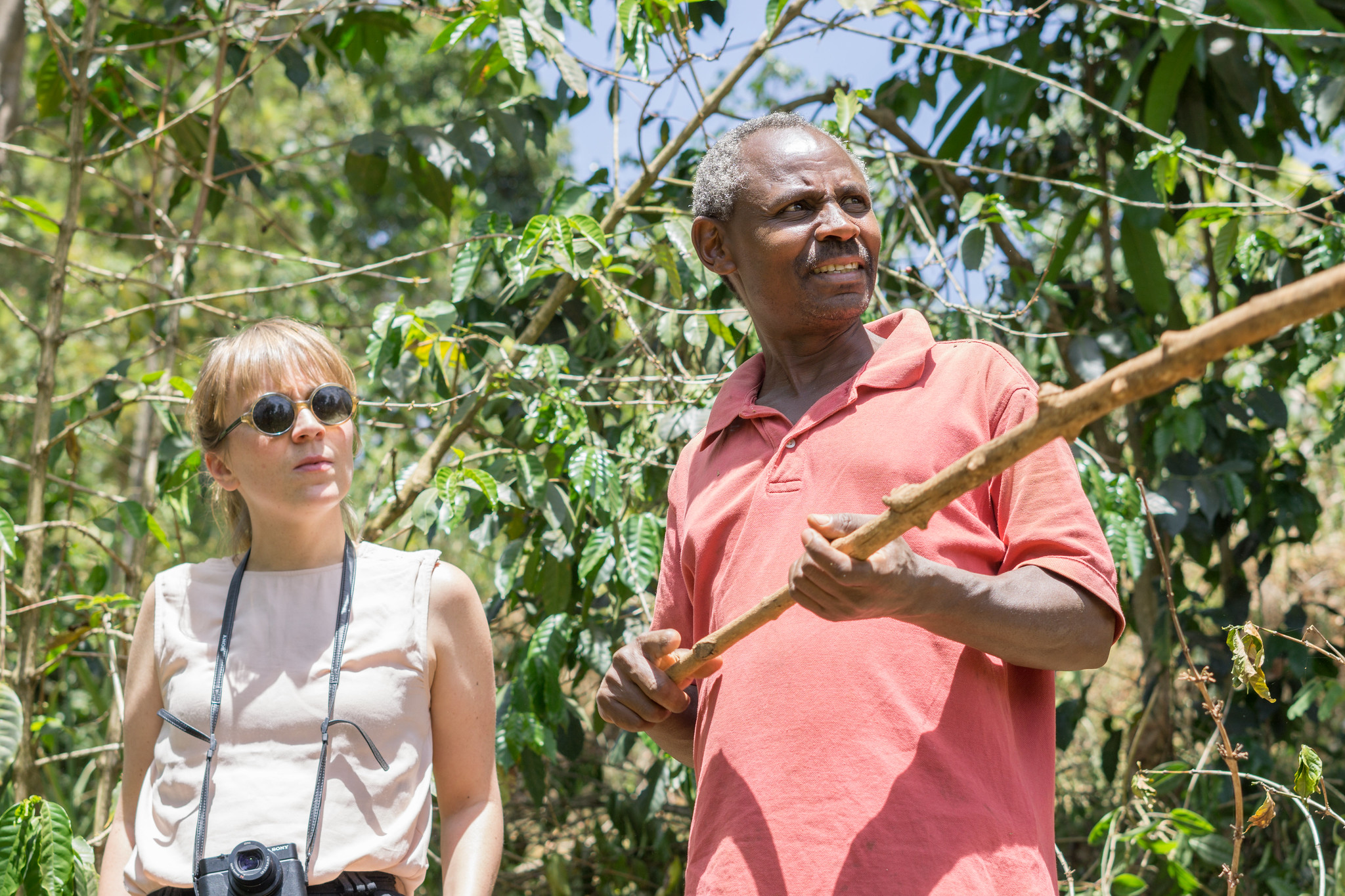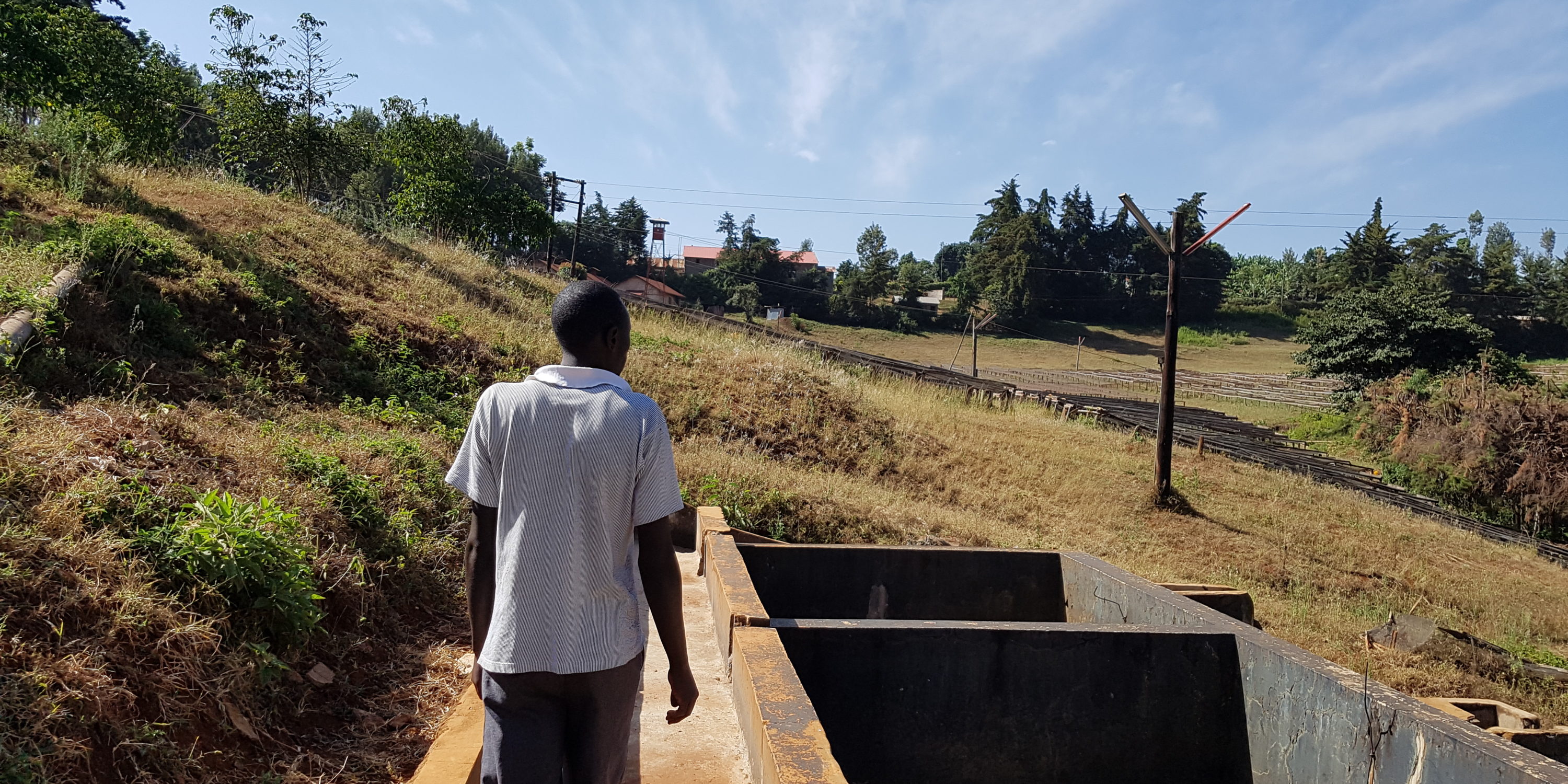The purpose of the trip this time is not to buy coffee. That’ll happen later, when the harvest, processing and milling is done, so we can taste the different samples, sometime around February. For this November trip the goal is to visit during harvest, at the peak of picking, and both learn and document what happens at this very important time.
It’s also the idea that by being present during harvest, we can help push for better quality. Not by telling people what to do, but merely to be there and talk with them about what can improve quality in each of the steps along the way.
It is very reaffirming to what we do, to talk to the farmers at Kieni and hear how big a difference our contribution to their total income makes. Last year we accounted for around 21% of the total income for Kieni and they were in the top 3 of all of Kenya for paying out the most money to the farmers. This is no small achievement, and it means that wherever we went, people knew about Kieni and that they paid good money to their members.
That higher payment we’re able to make is of course dependent on the quality that Kieni delivers. And it’s important for us that our long-term relationship doesn’t become a sleeping pillow for Kieni, but that they keep focusing on quality. Visiting reaffirms us that they’re 100% focused on continuously improving the quality and that our money matters to the farmers.
I’d like to share with you some of the crucial steps for quality, that goes on during harvest. Whole books are written on each of these steps, so this is only meant to share with you a few of the interesting things we learned on this trip.
Of course it all starts with the plants, the soil and the caretaking of the trees throughout the year. At Kieni we’re seeing more and more organic compost and manure being applied to the trees in stead of chemical fertilizer. In Kenya you won’t find any organic certified coffee due to both the application of fertilizers and because of huge problems with deceases and bugs. Some of the biggest problems are Coffee Leaf Rust (CLR), the Antestia bug and the biggest of them all: Coffee Berry Decease (CBD in short) which is a fungus that causes the coffee cherries to become dark and fall off before ripening. It’s a major problem that there’s no organic way of combatting yet, according to Kenyan agronomists.
These obstacles have forced many farmers in Kenya to replant their SL28 and SL34 varieties to the lower quality but more resistant Ruiru 11 variety. A pity of those of us wanting the best possible quality, but understandable from the farmers perspective. If their income is still not sufficient of course they’ll focus on the most secure and higest yielding plants. If we want better quality we’ll need to make sure the farmers earn a lot more for their coffee. See my talk from Paris here for further elaboraton on this important topic.
According to one of the Kieni farmers he doesn’t think that SL28 is actually that prone to CBD if it get’s the correct input (enough nutrients in the soil). But of course the correct inputs are dependent on finances. With access to finances they can buy good input.
A newer variety was released sometime around 2010, called Batian. It’s a hybrid of several varieties including SL28 and Ruiru 11. It was developed in Kenya to combat CBD and CLR while providing a better flavour than Ruiru 11. However, the farmers we spoke to says the yield isn’t higher for Batian than SL28 and in my (limited) experience the Batian doesn’t taste as good. We hope to encourage farmers to keep SL28 plants and not replant or graft Batian onto the SL rootstock. But it’ll require both better finances as well as better understanding of what we as roasters are looking for.
During the peak of the harvest, the Kieni members will pick and deliver cherries three times per week. They’ll pick different areas on those days, so it’s more like 2 weeks between each tree is picked. Still, the picking season extends for around two months, so the same trees are picked many times ensuring that only the fully ripe and overripe cherries are picked. The overripes will then be sorted out immediately after picking and dried at the farmer’s house as Mbuni – natural processed coffee – for local consumption.
The fresh picked cherries are then carried, muled or driven to the coffee factory – the wet mill. In this case Kieni. Some of these farmers have to carry the coffee cherries by hand for several kilometres on incredibly steep paths. When we were at Kieni on the picking day it was raining all morning, delaying the picking and making the dirt roads almost impossible to walk or drive. We went to visit a few farmers and tried ourselves to pick some coffee, in the rain.
I don’t think you can comprehend how labour intensive this work is. You’re walking on a steep hillside, in mud, wet from rain, slipping around, trying to pick only the ripe cherries off a branch, avoiding damaging the unripe cherries or the leaves, and not leaving any to become overripe and infected with deceases.
As Lukas said when we walked back: “This really puts things into perspective when you dump a pot of coffee because you weren’t happy with the brew.”
Once the coffee is delivered to the factory the entire content of the bag must be emptied out and the farmer will sort for more under- and overripe coffee again. The mill manager (or one of his assistants) will then inspect and approve or reject the quality.
Due to the high payment Kieni has been able to offer its members, more and more farmers have started to deliver cherries to them. They’ve gone from 700 to 900 active members the last couple of years. However, this means they have had to be even more strict with the quality assurance, when farmers deliver cherries. While we were there a whole truckload of coffee from several farmers were rejected and told to take it to another mill, as the quality wasn’t up to Kieni’s standards. Very reassuring to see for us.
After approval the farmer’s coffee is weighed and they receive a receipt for the amount they’ve delivered on that day. Two copies are kept at the factory and society offices. The farmers then have to wait half a year before the society have sold all the coffee and know how much money they’ve received in total. That is then divided between the member dependent on how much coffee they delivered. So that receipt is pretty important.
From here on the farmers really doesn’t see his coffee anymore. The mill takes over. And this is why the mill manager is so incredibly important. This year Kieni hired a new mill manager, Mr. Josphat Muriuki. He has 26 years experience as mill manager so he’s not new to the game. Initially I was a bit worried about this change, as the previous manager Peter Macharia, has been very good and improved the quality over the years.
The mill manager is hugely responsible for the quality. If the depulper is slightly off adjustment, it can either damage the beans or leave too much fruit skin together with the fermenting coffee. The fermentation times are incredibly important for developing the flavour and avoiding risk of unwanted odours. The cleanliness of the tanks and washing channels, the correct amount of washing, changing of the water in the soaking tanks and especially the drying phase of the coffee is hugely important.
Fortunately, my worries were put to ease. Josphat have had extra training this year from Kieni’s marketing agent, KCCE, and by being there ourselves we could also talk about, which things have been good in the past years and which can be improved from our perspective.
I exchanged numbers with both Josphat and a few other farmers. This trip again confirmed to me how technology really is changing things. Just a few years back we’d only have contact with Kieni once a year when we visited them, and all other dialogue was going through their marketing agent.
Now I get weekly updates on the process of harvest, how many kilo parchment they delivered and questions about how their coffee is tasting, directly from the chairman and mill manager. It’s fantastic! It means that we can have a much more open and honest conversation about quality and expectations as well as a continuous feel with life at the farm and mill.
After the coffee leaves the factory it’s driven in trucks to the Dry Mill. Since Kieni have signed with the marketing agent KCCE they drive the coffee to their mill, KCCM, in Sagana town, about half an hour away. Here’s the coffee is weighed and given lot numbers, parchment is removed and the coffee is sorted for foreign objects, defects, into sizes and grades. After that the coffee is sent to another warehouse in Nairobi where it is further hand sorted and packed in vacuum bags.
When Kieni changed their marketing agent a couple of years ago, one of the first things we started talking with them about, was getting the coffee vacuum packed. They were able to rent some equipment then but last year they invested in a new vacuum packing line, that I got to see now. It’s a really solid setup and means they can vacuum pack all our coffee in relatively good time. This means a lot for the quality of the coffee. It prolongs the life of the green coffee tremendously and protects it much more that other packaging options in the crucial stages of shipping.
As a final note I can share that it’s been interesting to see the change this year in Nyeri. There’s a lot of competition between the marketing agents to get hold of the factories, and it seems like a lot of societies and factories this year has switched marketing agents in an attempt to try new things. When I asked them why they changed, the answers were blurry. It wasn’t really that they were unhappy with the payment last year, but rather that they wanted to try something new.
I’ll wrap this up now, but will be back with a shorter post from our visit to Karogoto factory.
See all photos from our trip on Flickr
Related stories
Would you like to get our different coffees delivered directly to your doorstep? We've got you covered.
Address
Coffee Collective
Godthåbsvej 34B
2000 Frederiksberg
CVR: 30706595
Contact
mail@coffeecollective.dk
+45 60 15 15 25 (09.00-15.00)
Coffee and cookies
This site uses cookies.
Find out more on how we use cookies.
